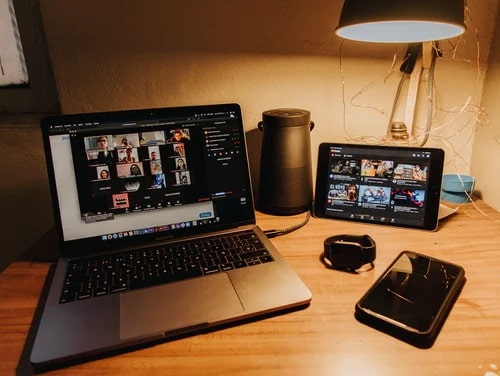Blog

With no sign of the pandemic abating, we find ourselves in limbo; working from home, perhaps with occasional visits to the office. Four months into this health crisis, we are dealing with a highly politicized global pandemic. We are not clear what the new ‘normal’ will be, as Zoom communication and other digital communication tools become more integrated into our work lives. As this ZDNet article indicates about a hybrid work model: “Generation Z will soon become the largest segment of the workforce and they are interested in a hybrid approach to work — time split between home and workplace.” With new technologies, it’s important to protect yourself when communicating with colleagues and friends.
Hate takes on new forms
“Zoom-bombing” is another vicious way white supremacists and other hateful groups can attack and disrupt our lives. We’ve all heard of Zoom calls disrupted with pornographic or unwanted images.
There are ways to guard against this form of attack. This article covers the basics. Do not use your personal meeting ID. Generate a meeting password so uninvited guests cannot drop in. Zoom’s waiting room feature ensures attendees are approved before joining. Having control of the call is vital. Mute audio and disable video for the attendees and turn off the screen for all attendees except the meeting host. These are good safety precautions and an effective way to run a meeting.
Stick to your desktop
Zoom was created to be a desktop application, so it is better for use on your computer than downloading the Zoom app for your smartphone. This Forbes article states that “shunning the app helps you avoid security issues such as the flaw in the Mac Zoom app that allowed hackers to take over your camera and microphone. The issue is now fixed, but more like it will still turn up in the future.” Why unnecessarily risk your security? Mobile apps in general (as covered in a previous post) have a tendency to create security challenges.
Practice general security
Zoom and other video apps such as Google and WhatsApp abide by the same rules as other applications. It is safer to use one account, create a strong password (changed regularly) and two factor authentication. We may neglect some safety practices when working from home, but we are still vulnerable.
The China connection – be aware
Zoom has been accused of being a Chinese company, which along with TikTok and Huawei may mean it is not a source of trusted technology. While Zoom is not a Chinese company (copycats from China exist), it is not innocent in dealings with Beijing.
China recently asked the company to take down Zoom accounts it identified as protesters against the regime’s practices. This action resulted in a letter to Zoom’s CEO Eric Yuan from US lawmakers: “your company has admitted that it did so at the request of the Chinese government to comply with the laws of the People’s Republic of China (PRC), because some of the participants resided inside the PRC. … Zoom’s millions of daily users across the world who support, and demand basic freedoms deserve answers.” This may not warrant erasing Zoom from a desktop, but it highlights challenges facing big tech companies. We put a lot of trust into technology and should be aware of global actions.
We may well face this new way of life another 6 months, with Zoom a permanent fixture. While technology is welcome, it should be monitored for our benefit and not reveal personal information. Don’t let your guard down in the transition of working at home and the office and adjusting to the “new normal.”

